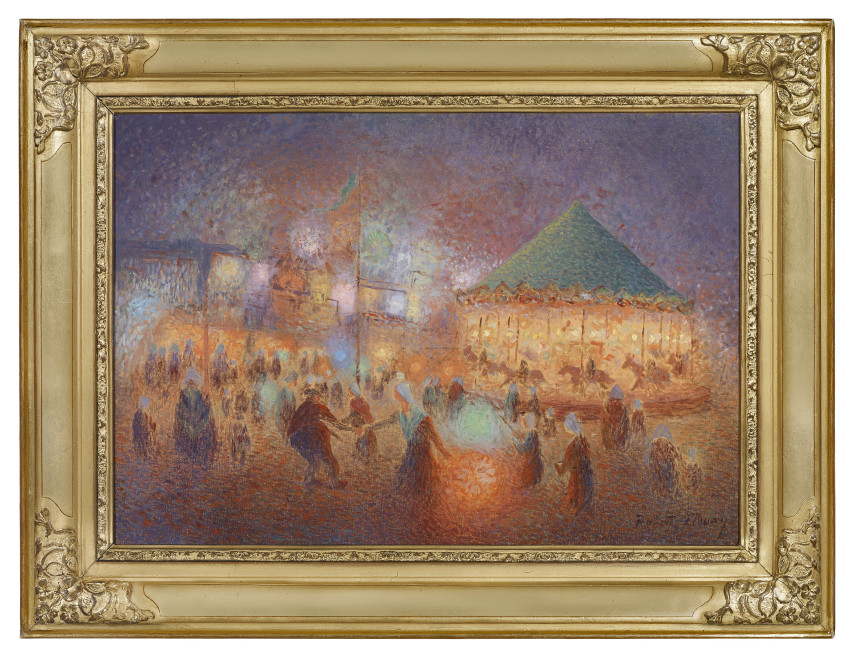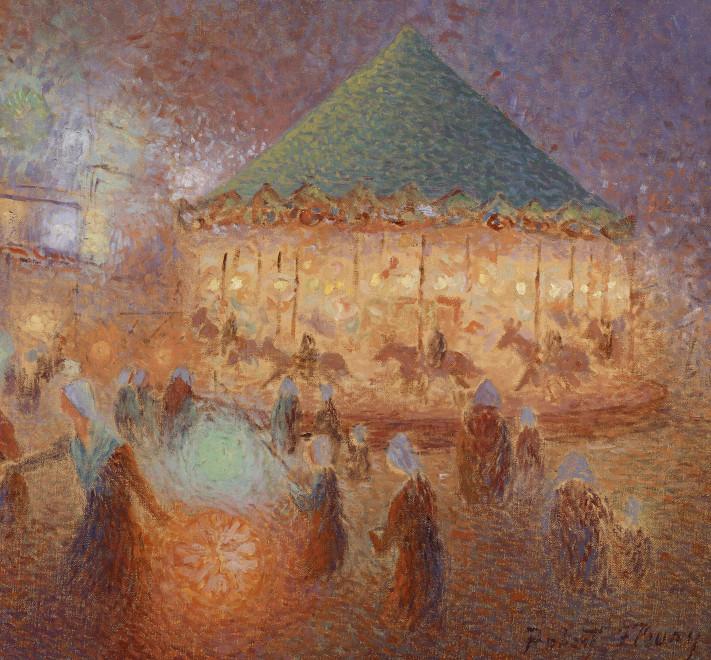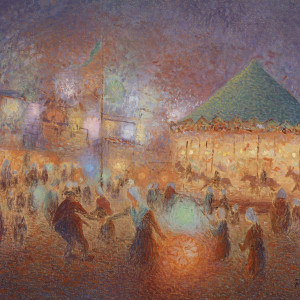50.4 by 73.3 cm.
Our painting was most likely painted in Brittany around 1900. It depicts one of the popular village fairs which often took place on Bastille Day.
Provenance
Private Collection, FranceCatalogue note
The trajectory of Tony Robert Fleury’s career took a dramatic turn at the end of his life. At the peak of his success in the 1870’s he was a critically acclaimed Salon painter; his monumental The Last Day of Corinth, won him a medal of honor at the 1870 Salon and was acquired by the French State for the Musée du Luxembourg. Today, this painting is in the Musée d’Orsay. He was a contemporary of William Bouguereau and succeeded Bouguereau as the president of the Société des artistes français. His popular atelier attracted many young artists, several of whom became better known than their teacher; one thinks specifically of Edouard Vuillard, Lovis Corinth and Sir George Clausen. Perhaps it was the influence of these younger artists, who were closer to the aesthetic of the time, which favored a looser, more impressionistic style, that dramatically altered the course of Robert Fleury’s painting during the final years of his life.
Our painting was most likely painted in Brittany around 1900. It depicts one of the popular village fairs which often took place on Bastille Day. In subject and style, Robert Fleury’s work may be compared to fellow Breton painter, Ferdinand du Puigaudeau; natural and artificial light sources were trademarks of each painter’s Brittany fair subjects . Robert Fleury’s crowded fête includes a lamplit carrousel and a bonfire, subjects conducive for illuminating the nighttime sky with bursts of color, turning darkness into light. For Robert Fleury, traditional, academic history painting had now been replaced with a new form of “history” painting, one that recorded the events of everyday life. This dramatic shift in both subject and style, as seen in paintings such as Night Fair, Brittany, may be viewed as transforming Tony Robert Fleury, a traditional painter and exponent of the conservative Paris art establishment, into a champion of modern art.






